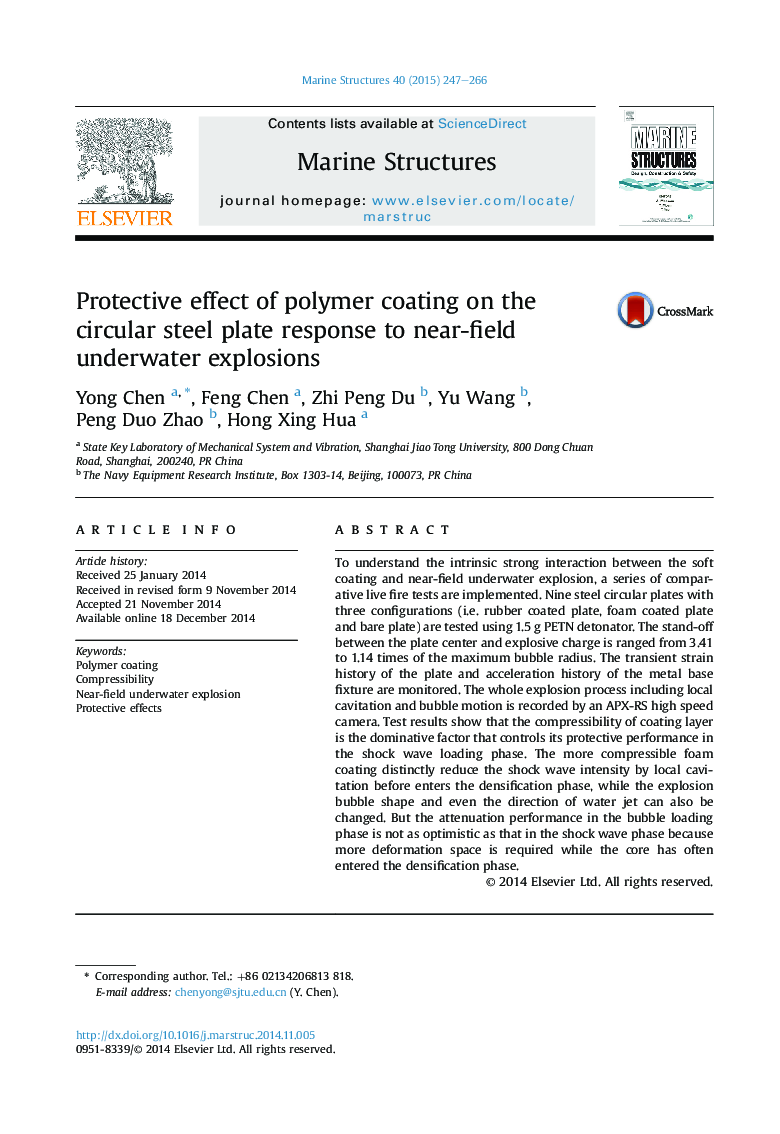| Article ID | Journal | Published Year | Pages | File Type |
|---|---|---|---|---|
| 294410 | Marine Structures | 2015 | 20 Pages |
•The metal circular plates with different coating configurations are live fire tested in a water tank.•The mechanical property of coatings is given.•The acceleration and strain history is compared to evaluate the protective performance.•The explosion process including local cavitation and bubble motion is recorded and analyzed.
To understand the intrinsic strong interaction between the soft coating and near-field underwater explosion, a series of comparative live fire tests are implemented. Nine steel circular plates with three configurations (i.e. rubber coated plate, foam coated plate and bare plate) are tested using 1.5 g PETN detonator. The stand-off between the plate center and explosive charge is ranged from 3.41 to 1.14 times of the maximum bubble radius. The transient strain history of the plate and acceleration history of the metal base fixture are monitored. The whole explosion process including local cavitation and bubble motion is recorded by an APX-RS high speed camera. Test results show that the compressibility of coating layer is the dominative factor that controls its protective performance in the shock wave loading phase. The more compressible foam coating distinctly reduce the shock wave intensity by local cavitation before enters the densification phase, while the explosion bubble shape and even the direction of water jet can also be changed. But the attenuation performance in the bubble loading phase is not as optimistic as that in the shock wave phase because more deformation space is required while the core has often entered the densification phase.
